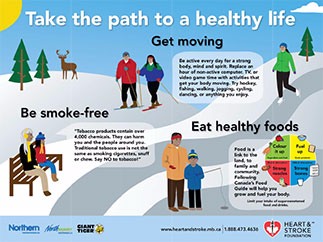
Alder Creek Inspections and Consulting
Helping In Ways to Help Cancer Proof Your Home
Cancer is a threat to every person on the planet. Although scientists are unclear as to why some people get cancer and others do not, there are known factors that increase your risk of being diagnosed with this deadly disease.
Cancer develops when your cells are damaged but do not self-destruct or are not destroyed by your immune system. They then mutate and begin to multiply out of control. That is why it is essential to cancer proof your home.
Many things can lead to the initial cellular damage. Environmental pollution, nutritional deficiency, overall physical health, and family history are evaluated when cancer is detected.
As individuals, it is important to minimize as many “outside” influences in regards to cancer as possible. Risks that we can personally change are a step in the right direction.
Maintaining a healthy bodyweight, quitting smoking, and avoiding too much unprotected exposure to ultraviolet light are well known changes you can make to your lifestyle to lower your risk.

There are several others that are not as commonly known…
Cancer-Proof Your Home in 7 Steps
1. Monitor the radon levels in your home. Radon is an odorless, colorless gas that comes from the natural breakdown of uranium in the earth. It enters your home through the ground. Radon is radioactive and a known cancer-causing agent. In fact, radon is second only to smoking as the cause of lung cancer in the United States. Your local store will stock radon detectors, which works similarly to a smoke detector. It is easy to install and fairly inexpensive.
2. Ditch the non-stick pans and “resistant” fabrics. While non-stick pans are convenient, toxic gasses caused by perfluorooactanoic acid (PFOA) are released into the air every time you use them. “Resistant” fabrics – such as stain, fire, or water-resistant – also contain these cancer-causing chemicals that pollute the air with fumes you can’t see or smell. Research has confirmed that these chemicals (especially worn against the skin or in your carpeting) accumulate in the blood at an alarming rate, leading to chronic diseases like cancer.
3. Evaluate your beauty regimen. The average woman who uses make-up can absorb as much as five pounds of chemicals each year that include heavy metals, formaldehyde, and other confirmed carcinogens. The application of such ingredients to your skin is more dangerous than ingesting them. Your saliva and stomach can break down some toxins and flush them from your body. When applied to the skin, they are absorbed through your pores directly to your bloodstream. Minimize your exposure by searching out organic products that might be a bit more expensive, but are well worth the investment.
4. Skip the canned food and plastic containers. When plastic is heated, it releases toxic fumes, which can also be absorbed by your food. Canned goods are packaged in tin, aluminum, and steel that can break down and leech into food over time. Many canned goods are also lined with bisphenol A (BPA) – a cancer-causing agent found in plastic resins and thermal papers. Opt for frozen vegetables over canned and look for “BPA-free” products.
5. Take a second (and then a third) look at your cleaning products. Researchers have discovered that women who use the majority of cleaners and/or air fresheners in their homes have a breast cancer risk of women who do not. Many cleansers, air fresheners, and detergents contain carcinogens that include alkylphenols, triclosan, diethanolamine (DEA), and triethanolamine (TEA) – all of which have been linked repeatedly to cancer studies. There are many sites online that provide organic cleaning product recipes that work!
6. Check your building materials. Many building materials used in residential homes may contain cancer-causing chemicals, not to mention other components that can harm the environment. Many types of insulation contain styrene and fiberglass, formaldehyde is used as a cheap binding agent for laminate and plastics, and many older homes test positive for lead and asbestos. Though remodeling your home can get expensive, search for inexpensive methods of rectifying some of these issues if you find them in your pre-existing home. If you’re having a home built, insist on environmentally friendly materials.
7. Grow your own organic garden. Given all the pesticides that are being used in and around our vegetables and fruits these days, it might be a more sensible choice to grow your own organic garden. A new method called “square foot gardening” makes it possible to grow fresh produce even in small spaces or urban environments. In the beginning, it may seem like more trouble than its worth but the flavor – and sense of security – will change your mind.
Taking one room at a time, you can “cancer proof” much of your home within a few days. You’ll breathe, sleep, and eat easier.
